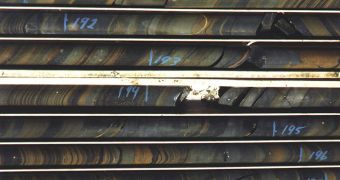The results of a new scientific study refine our knowledge about how Earth's oceans looked like about a billion years ago. The picture the research paints has tremendous implications, since it shows that iron was the prevailing nutrient for prolonged periods of time, rather than oxygen.
Experts already know that massive amounts of the essential gas made their way into the atmosphere more than 500 million years ago. However, they did not know the chemical makeup of the oceans before that time. This gap in knowledge prevented them from understanding aspects of evolution.
What scientists agreed on was that the chemical was a lot more difficult to come by before the evolution of marine animals. They calculated the approximate amount of oxygen that may have permeated the oceans at any given time over the past 2.5 billion years.
The new study shows that these calculations severely overestimated the amount of oxygen available. The research also underlines that vast amounts of iron permeated the waters, potentially helping to feed tremendously large phytoplankton blooms.
This study was conducted by investigators at the University of California in Riverside (UCR), who say that iron is now proven to have been a key nutrient for oceans for about a billion years longer than other studies have proposed.
“The implications are far-reaching. We will need to rethink, in a fundamental way, all our models for how life-essential nutrients were distributed in the ocean through time and space,”UCR biogeochemist Timothy Lyons explains.
The researcher was the principal investigator of the new study, which is published in this week's issue of the top scientific journal Nature. The work was funded by the National Science Foundation (NSF).
“This study addresses major gaps in our knowledge about the co-evolution of life and the chemistry of the oceans 2.5-0.5 billion years ago, and points to the need for geochemical data from widely distributed deposits,” NSF Division of Earth Sciences program director Enriqueta Barrera adds.
The international scientific community tends to agree that only extremely low amounts of oxygen existed on Earth before 2.4 billion years ago. However, experts don't really see eye to eye when it comes to explaining oxygen concentrations during the planet's middle ages, 2.4 to 0.5 billion years ago.
“The problem all along was a general lack of evidence in the oceans for the amounts of oxygen, iron, and sulfide in Earth's middle history, particularly in a critical billion-year window between roughly 1.8 and 0.8 billion years ago,” UCR PhD student and lead paper author Noah Planavsky says.
“Some earlier work supported a return to an iron-rich ocean 0.8 billion years ago. Rather than a return, however, we predicted that iron may have dominated the deep ocean continuously right up to oxygenation and the rise of animals a mere half-billion years ago,” he concludes.

 14 DAY TRIAL //
14 DAY TRIAL //